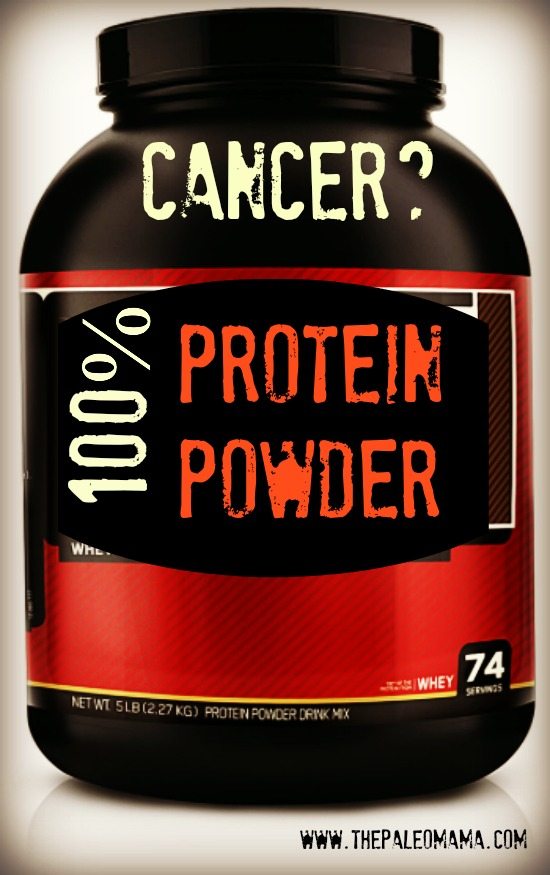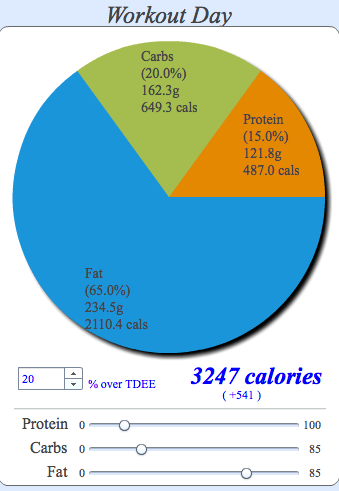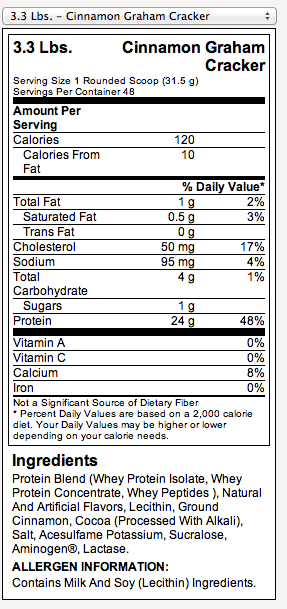I’m kicking off a series today titled, “MythBusters“; a copy-cat to the popular show on the Discovery Channel, but I’ll be adding in my own real food twist. MythBusters is a science fiction show that uncovers the truth behind popular myths and legends. If you’ve never seen the show, go watch it!
In this new series of mine, I’m going to be taking a real food look at some of the popular “myths” in today’s society. And today I’m going to talk about…
Protein: The Good, The(Not-So) Bad, The Ugly
Before we look at protein powder, I think it’s important to take a look at how much protein our body actually needs.
How Much Protein Do I Need?
Here’s 3 opposing schools of thought for you to chew on:
- Protein recommendations from the United States Department of Agriculture (USDA) – according to their website, I should only be eating 5 ounces of protein PER DAY!!! One chicken breast is roughly 6 ounces. Excuse me while I LOL at this one.
- Protein Recommendations from The American College of Sports Medicine (ACSM): this site is pretty reliable, especially for athletes and endurance runners. Protein should be 15-20% of the diet, and the recommended daily allowance (RDA) is 0.8 grams of protein per kilograms of body weight.
- Protein Recommendation from Ph.D. Paul Jaminet, author of The Perfect Health Diet: the micronutrients ratio he recommends is 20% carb, 65% fat, and 15% protein. He bases these recommendations off of these things:
- Observations of our ancestors – a look into the hunter-gatherer diet shows us that our ancestors’ diets were very close to this ratio. They also did not favor lean meats except for periods of starvation and scarcity.
- Composition of human breast milk – Human breast milk is 39% carbohydrates, 54% fat and 7% protein.
- Composition of our own tissues – an average male is 60% fat and 20% protein. It makes sense to eat foods in the ratio that composes our body.
- Preference for omnivorous animals for high-fat diets – all choose to eat an high-fat, low to moderate protein and moderate carbohydrate diet.
15% Protein Looks Like This…
A moderately active 5’10 male of 180lbs should eat 15% protein, which equates to almost 122 grams of protein. His workout day should look like this…
(Click here to figure out your macronutrients.)
Now that you have an idea of how much protein your body, truly, needs, let’s take a look at the different kinds of protein that we can use to fill our body’s 15% needs.
Protein Powder: The Ugly
What is protein powder? Protein powder is a “nutritional” drink that is packed with protein and can be consumed in a number of ways. Protein powder is not only consumed as a drink now, but many people are building recipes around this “nutritional” supplement. Whether you are trying to lose weight, enhance your athletic performance, or a busy mom with no time to make a real meal, protein powder seems very convenient.
Three Kinds of Protein Powder:
- Soy – plant-based source of protein
- Whey – a protein found in milk and is fast absorbing
- Casein – the main protein in milk and is slow absorbing
What’s in Protein Powder?
Let’s take a look at the top-selling brand on the popular Bodybuilder website.
Questionable Ingredients:
Natural & Artificial Flavors – I could not find the specifics on what these are exactly. However, experience tells me to stay away from artificial flavors.
Lecithin (soy) – read here about all the dangers of soy
Cocoa (Processed With Alkali) – Alkali is simply a base, the opposite of an acid. Natural cocoa powder is lightly colored and has a somewhat sharp acidic flavor. Processing it with alkali neutralizes the acidity and makes the taste milder and the color darker. This treatment is called the Dutch process. Doing this makes it sweeter and helps it to mix easier with liquids, however, The Dutch process reduces the amount of natural flavonols, or antioxidants, in the cocoa powder.
Acesulfame Potassium Sucralose – the two most alarming things about this ingredient is:
- According to Cancer.gov it causes cancer (source).
- It contains methylene chloride, a known carcinogen (read source).
Sucralose (aka Splenda)– causes all sorts of issues (source)
- Gastrointestinal problems
- Seizures, dizziness and migraines
- Blurred vision
- Allergic reactions
- Blood sugar increases and weight gain
That is a lot of harmful side-effects to America’s top best-selling protein powder. Sure, there might be some protein powders that are less harmful. If you’ve been around the real food world for a while, you will see that this is often a question that is asked.
Protein Powder: The (Not-So) Bad
“Which protein powder is Paleo?”
Well, none, really. Paleo is about eating WHOLE, unprocessed foods. However, canned coconut milk and almond butter are not whole, yet are accepted as real food. Also, the answer to this question depends on how Paleo you would like to be. I prefer to be 80% Paleo and leave the 20% to other non-Paleo indulgences. Maybe you prefer the same, and this 20% could consist of a decent protein powder.
Here’s a few recommendations:
PaleoPro – a new powder on the block consisting of eggs, beef, and sweetened with stevia.
Great Lake Beef Gelatin – this gelatin powder comes from grass-fed beef. We use it to add to shakes, smoothies, and coffee for added nutrition.
Hemp Protein Powder – it boosts 11g of protein and only ingredient is organic hemp seeds
Egg Protein Powder – this is from egg whites…if you could find one from whole eggs it would be better. Better yet, throw a few pastured, raw eggs in a smoothie.
Protein: The Good
Best Sources of Protein:
Beef
- Hamburger patty, 4 oz – 28 grams protein
- Steak, 6 oz – 42 grams
- Most cuts of beef – 7 grams of protein per ounce
Chicken
- Chicken breast, 3.5 oz – 30 grams protein
- Chicken thigh – 10 grams (for average size)
- Drumstick – 11 grams
- Wing – 6 grams
- Chicken meat, cooked, 4 oz – 35 grams
Fish
- Most fish fillets or steaks are about 22 grams of protein for 3 ½ oz (100 grams) of cooked fish, or 6 grams per ounce
- Tuna, 6 oz can – 40 grams of protein
Pork
- Pork chop, average – 22 grams protein
- Pork loin or tenderloin, 4 oz – 29 grams
- Ham, 3 oz serving – 19 grams
- Ground pork, 1 oz raw – 5 grams; 3 oz cooked – 22 grams
- Bacon, 1 slice – 3 grams
- Canadian-style bacon (back bacon), slice – 5 – 6 grams
Eggs and Dairy
- Egg, large – 6 grams protein
- Milk, 1 cup – 8 grams
- Cottage cheese, ½ cup – 15 grams
- Yogurt, 1 cup – usually 8-12 grams, check label
- Soft cheeses (Mozzarella, Brie, Camembert) – 6 grams per oz
- Medium cheeses (Cheddar, Swiss) – 7 or 8 grams per oz
- Hard cheeses (Parmesan) – 10 grams per oz
Nuts and Seeds
- Peanut butter, 2 Tablespoons – 8 grams protein
- Almonds, ¼ cup – 8 grams
- Peanuts, ¼ cup – 9 grams
- Cashews, ¼ cup – 5 grams
- Pecans, ¼ cup – 2.5 grams
- Sunflower seeds, ¼ cup – 6 grams
- Pumpkin seeds, ¼ cup – 8 grams
- Flax seeds – ¼ cup – 8 grams
I hope this gives you an understanding of what your protein needs are and the proper sources for nourishment. Would love to hear what your favorite protein sources are and if you choose to use protein powder, which ones?
This post is linked to Party Wave Wednesday at Holistic Squid.


